Telehealth Reverse Diabetes With Multilevel Exercise Imagery | Free Trial In Texas
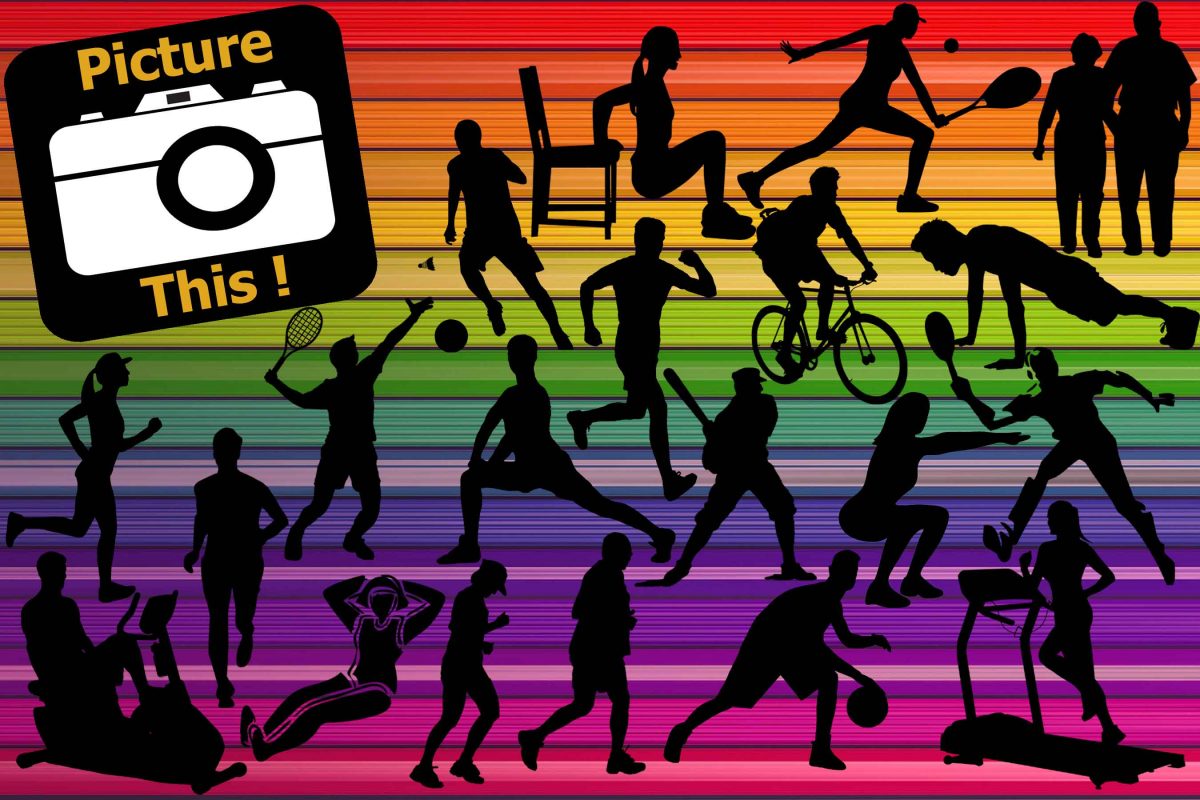
Enjoy good health! Practice improving Strength and Endurance every day. Within a few weeks, you can measure physical and metabolic improvements.
At the same time, you will be thinking better and feeling stronger!
Let us help you plan, prepare and act to Prevent and Reverse Diabetes.
To learn more about programs Herd Healthcare offers, our website is:
www.herdhealthcare.com
Multilevel Imagery
Mental Imagery is part of life. Like breathing and circulation. Even when we’re asleep. Everything going on around us and inside us is processed using mental imagery.
Routine mental imagery is the construct of experience formed by sensations, movements, thoughts, feelings and emotions. From storage in memory, it is retrieved whenever something like it happens again. The combination of current and past experience directs immediate responses and becomes memory of what just happened. Almost all without conscious awareness.
If we do become aware, we assume that’s what we should do. We can deliberately change it but we seldom redirect anything. Maybe next time. But probably not. Everything happens too fast. We go all day and sleep all night without deliberately changing our mental imagery.
Most days, everything we do is routine and automatic. Only occasionally do we deliberately think, plan and act to experience something new.
We can review and rehearse our mental imagery. Usually, we can vaguely remember something about what happened yesterday. But not much about it.
Developing the skill of mental imagery begins with learning to pay attention to what’s going on and what to think about it.
Multilevel Imagery consists of Basic, Physical and Mental Functions
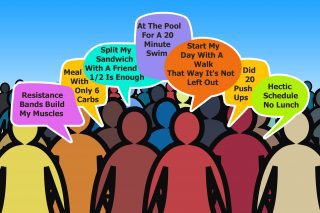 Basic: What anyone can See, Hear, Touch, Taste, Smell or Measure.
Basic: What anyone can See, Hear, Touch, Taste, Smell or Measure.
•Nutrition – day and time, meal or snack, quantity, nutrient components
•Exercise – day and time, strength or aerobic, type, intensity, duration
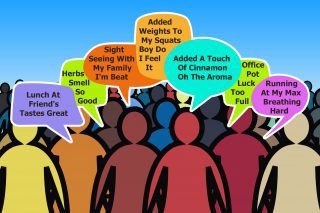 Physical: Direct effects of Personal Involvement.
Physical: Direct effects of Personal Involvement.
•Nutrition – taste, smell, touch, fullness
•Exercise – muscle/joint sensation, heart rate, breathing, fatigue
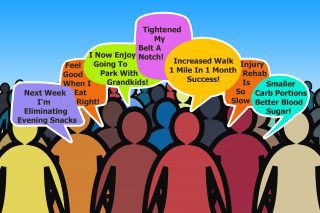 Mental: Interpretation, Significance, Feeling, Emotion, Motivation
Mental: Interpretation, Significance, Feeling, Emotion, Motivation
•Nutrition – satisfaction, pleasure, success or failure, future action
•Exercise – satisfaction, pleasure, success or failure, future action
Deliberate Practice In Sports And Athletics
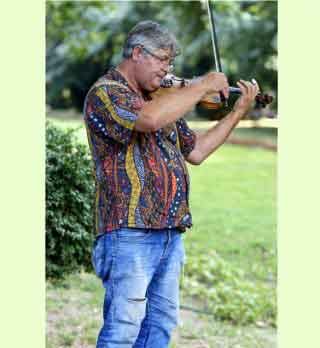 Deliberate Practice is a fundamental feature of expert performance. It is highly structured and targets individual performance in specific activities. Furthermore, it requires hours, days, months and even years of practice to acquire exceptional performance.
Deliberate Practice is a fundamental feature of expert performance. It is highly structured and targets individual performance in specific activities. Furthermore, it requires hours, days, months and even years of practice to acquire exceptional performance.
The original studies of deliberate practice were carried out with violinists. They were asked to rate practice according to type and time of practice. Results indicated that the `best’ violinists engaged in substantially more practice than violinists who were less proficient. Also, the most effective types of practice required the most effort and were least enjoyable.
The most effective feature observed to improve performance was the amount of time individuals spent in deliberate practice.
Similar results have been reported when testing the deliberate practice among athletes in various sports. Each sport has been noted to have specific practice efforts that most closely indicated what was required in competition.
•Wrestlers: mat work and work with coach
•Figure skaters: on-ice training and lessons with coach
•Runners: speed work and time trials
Psychological skills contribute to athletic performance. Several studies have shown that elite athletes are better able to concentrate, are more committed, have more self-confidence and show greater motivation.
Champion athletes make use of goal-setting, competition planning and imagery. Athletes in many sports are particularly encouraged to give as much attention to mental imagery as they give to physical practice.
Mental imagery in athletics involves deliberate effort for rehearsing motor skills, planning competition strategy, countering anxiety and enhancing motivation.
Studies of mental imagery have been reported in Canadian athletes who participated in 18 different sports. Three categories of competition divided 150 athletes into recreational (n = 50), provincial competition (n = 50) and national competition (n = 50). The average duration of experience for athletes in all 3 categories was 9 years.
All athletes were asked to complete a Deliberate Imagery Practice Questionnaire. 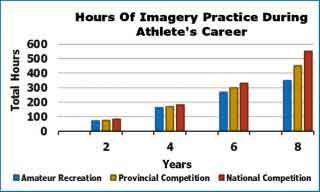 All were asked to estimate the hours they had spent on imagery for each year they had participated in their sport.
All were asked to estimate the hours they had spent on imagery for each year they had participated in their sport.
As shown in the Figure, differences in amounts of mental imagery between the 3 groups became apparent after 5 years.
Imagery Training in Sports also has been studied. Mental Imagery without any Motor action or Sensory stimulation has been used to improve real time performance. However the load of physical and mental imagery makes it difficult to learn the motor and imagery skills at the same time.
Multilevel Training improves both Imagery Ability and Real Time Performance. Deliberate Practice simply can’t involve much multitasking. Intensity of effort and focus of attention has to be directed towards one or two practices at a time.
The objective is to build imagery with more and more complex units. Simple discrete bits of information and action are assembled and condensed into chunks. Smaller bits of information are combined into more meaningful, memorable, larger units. This process of chunking assembles related constructs into units that no longer require conscious deliberation.
Each stage of imagery adds extra details to the experience. Complex thoughts, sensations, motor actions and assessments all combined together enable rapid, effective responses. The layering process provides a structured approach to Imagery Ability and Real Time Performance.
Investigators in Birmingham, UK tested layered stimulus response training for 24 men and women in golf putting. None of the subjects had practiced golf putting and none had any imagery training.
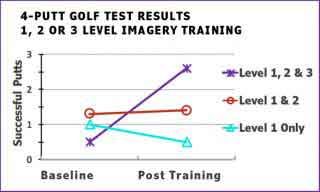 They were divided into 3 groups. Training of the first group was limited to Level 1 imagery, a second group was trained through Levels 1 and 2, while the third group was trained through all 3 Levels.
They were divided into 3 groups. Training of the first group was limited to Level 1 imagery, a second group was trained through Levels 1 and 2, while the third group was trained through all 3 Levels.
All were tested to evaluate their skill in putting a golf ball from 2 meters (about 6.5 feet) into a golf cup hole 5.5 cm (about 2.2 inches) in diameter. Each subject was given 4 tries at putting a golf ball into the hole. The number of successful putts was counted in all subjects before and after training in mental imagery.
As shown in the Figure, the greatest average numbers of successful putts out of 4 tries was greatest in the group trained sequentially in all 3 Levels of Imagery.
Multilevel Imagery In Exercise
The Objective of Positive Training in Exercise for subjects to improve health is to 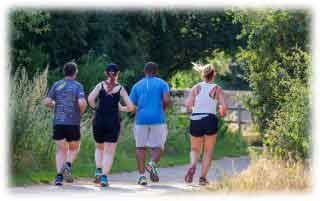 create Positive effect and Motivation towards Good Health Practices. We expect that Deliberate Multilevel Imagery will improve performance but the mastery we seek to train is much more than increased strength, endurance or muscle mass.
create Positive effect and Motivation towards Good Health Practices. We expect that Deliberate Multilevel Imagery will improve performance but the mastery we seek to train is much more than increased strength, endurance or muscle mass.
Recommendations for ideal exercise routines are only rough guides to follow. The Positive Training Guide for Exercise includes:
1. Selection: enjoyable exercise routines to practice daily
2. Process: plan, prepare, rehearse, action, review, revise, repeat
3. Training: gradually increase imagery skills
•Basic: observation and measurement
•Physical: perception and sensation
•Mental: assessment and motivation
Summary of Multilevel Imagery For Good Health Practices
The prevalence of diagnosed type 2 diabetes in the United States in 2016 was approximately 12% with 8.6% diagnosed and approximately 3.4% undiagnosed. Approximately one-third of adults have prediabetes and the majority don’t know they have it.
In all, about half of the adults in the United States should be acting to prevent or reverse type 2 diabetes. How many will seek treatment and how many will be successful in preventing or reversing type 2 diabetes is simply not known.
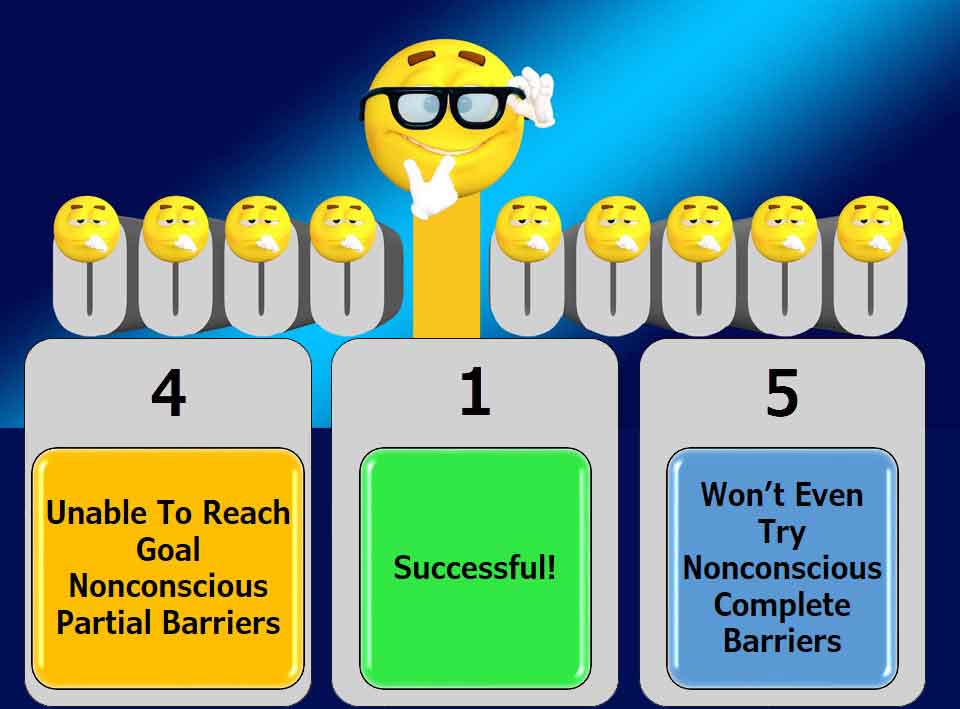 Most of them are overweight or obese and we do know something about treating obesity. Among every 10 individuals, we expect 5 won’t even try, 4 will be unable to reach their goal and 1 will be completely successful in preventing or reversing type 2 diabetes.
Most of them are overweight or obese and we do know something about treating obesity. Among every 10 individuals, we expect 5 won’t even try, 4 will be unable to reach their goal and 1 will be completely successful in preventing or reversing type 2 diabetes.
Our objective is to get people involved in positive health practices which they enjoy. Some can start right off enjoying exercise, healthy eating or improved sleep patterns. For the rest, our objective is to help them get pleasure of success by feeling better enough to intensify their effort.
Nonconscious barriers inhibit or totally block prevention or reversal of type 2 diabetes in about one quarter of the adults in this country. That reality must be improved!
Let us help you shape your nonconscious automatic practices to enjoy good health.
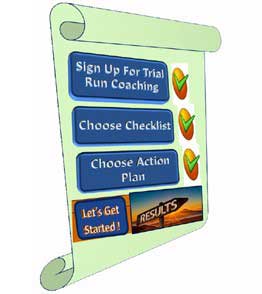 We are pleased to share our blog articles with you, and we are always interested to hear from our readers. Our website address is: www.herdhealthcare.com
We are pleased to share our blog articles with you, and we are always interested to hear from our readers. Our website address is: www.herdhealthcare.com




